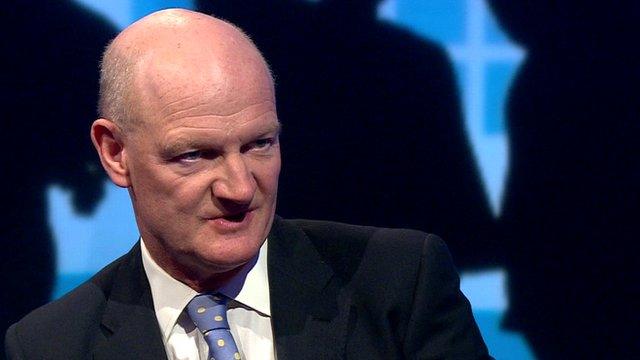Student loans: A peculiar sort of debt
- Published

There's been a lot of talk recently about student loans.
But the universities need to spend some more time thinking about the government bond markets. They hold the future of the higher education system.
As I reported this week, the business department has been considering a plan that would seek to get universities to buy their own students' debt in future.
The idea is that this would improve the incentives for universities to train their students.
There was a bit of confusion about how this interacted with another long-running issue: how much of the student loan book will be repaid.
They're not directly related, but this week is a good moment to look at this issue.
Grim mood music
The mood music is grim on this: a (slightly muddled) business select committee recently said the "government is rapidly approaching a tipping point for the financial viability of the student loan system".
Certainly, the loan scheme is expensive and costs more than was planned, but this all strikes me as a bit alarmist.
Student loans are a peculiar sort of debt.
They are given to any student on an eligible course to cover fees and living costs.
When those students turn into graduates, they pay 9% of their wages earned over £21,000 to service the debt.
So if students then take lower-paying work, the debt service drops (possibly to nothing).
If they have not repaid the total after 30 years, it will get written off.
'Income-contingent loans'
The principle here is that no-one should be unable to afford university, nor feel compelled to take a highly-paid job to service debts (it is a so-called income-contingent loan).
But the select committee worries that the system is too generous.

This is because, it says, the government loses about 45p on every £1 it loans out.
That ratio is known as the "RAB charge", and concern about it has been growing. Back in 2010, it had been assumed to be under 30p.
But it is important to deconstruct what that number actually means.
In particular, the calculation uses fixed assumptions on the cost of government borrowing.
One really major cost of running the loan scheme is the cost of borrowing the money that it takes out to lend to students, and the government uses very conservative figures to work this out.
The costing used by the business select committee assumes that the government would be able to borrow at 2.2% above retail price inflation.
That is a piece of Treasury lore: they assume that is forever the cost of borrowing.
I asked expert Dr Gavan Conlon, of London Economics, if he would recalculate how sensitive the cost of the system is to this assumption.
Rising repayments
His model gives slightly different answers to others - it suggests that the current cost is about 39p in the pound at 2.2%.
And, on his model, it falls to 31p if borrowing costs fall to 1.5%.
At 1%, it falls to 25p. At 0%, it is 10p.
So what is the government's current borrowing cost?
Well, a sale of government bonds from Tuesday shows it's actually currently below zero.
That low yield won't last. But when bond yields rise, wage growth will probably be on the rise too.
And that pulls down student loan costs, because it means graduate repayments are higher.
Politically saleable
So forecasts for the RAB charge should drift up from their current levels, but it is hard to say by how much.
Still, it's an oddity that it's being seen as in crisis when the cost of loans being issued right now is probably extremely low.
As it happens, even if the government does need to save money from loans, the IFS reckons that if you raise the threshold at 2% a year rather than in line with earnings, the cost drops from 43p to 31p.
Ex-students would rightly be annoyed by that.
But it's politically saleable - and certainly easier than surgery on the structure of university finance.
So the concern over the cost of the loan scheme clearly reflects poorly on the business department - a ministry which is generally quite competent.
And the cost of the system might fall harder on graduates than they currently expect. But the expected cost of loans needs to be put in context.
- Published29 July 2014
- Published28 July 2014
